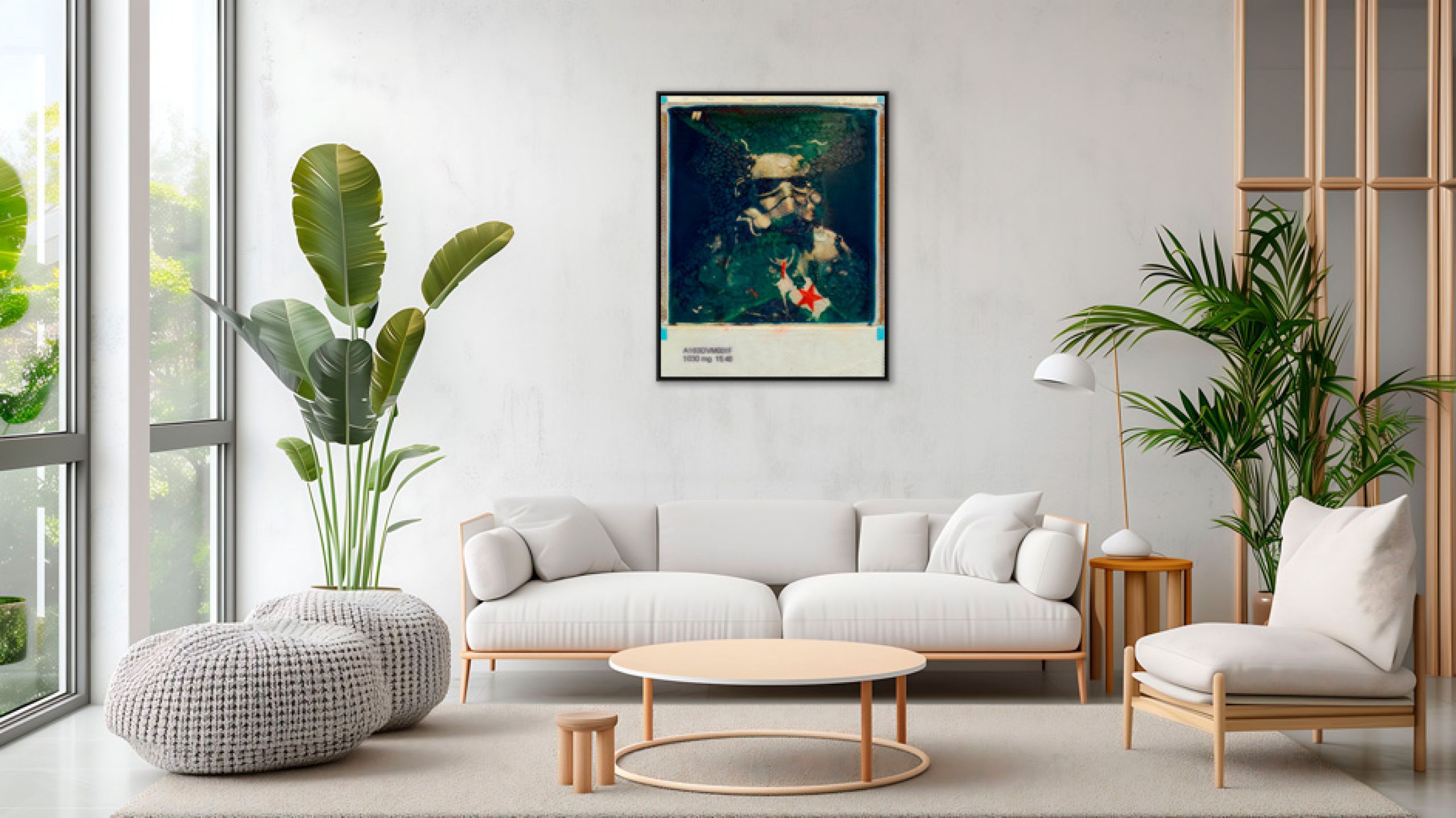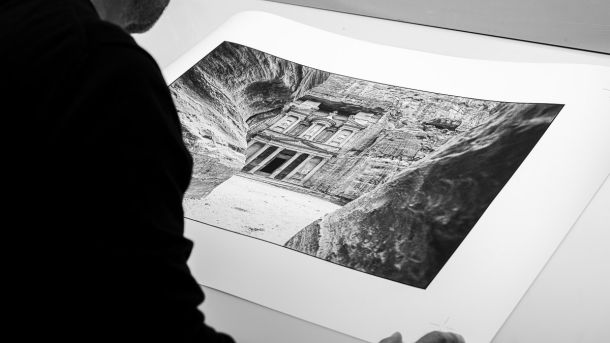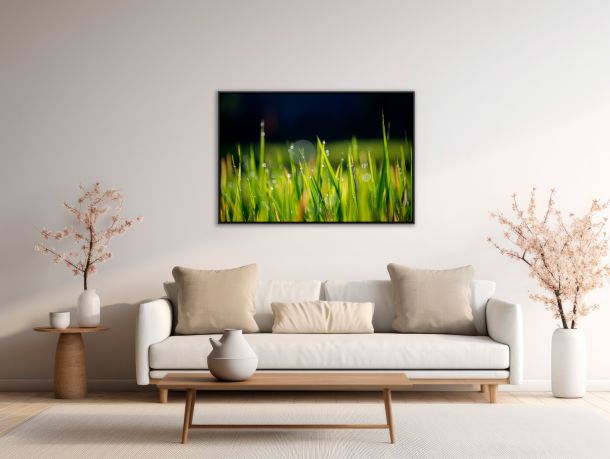Artistic Polaroid: From Instant Snapshot to Fine Art

Red Star Trooper – Photo : © André Robé
Looking to elevate your interior with unique works where spontaneity becomes art? The artistic Polaroid embodies this alchemy of nostalgia and modernity, now a sought-after collector’s item. Discover how artists like Andy Warhol and France Bizot reimagined the medium—blending innovation with iconic aesthetics—and why these unique images are redefining contemporary wall art.
Summary
- The History of Polaroid: From Popular Gadget to Artistic Medium
- The Great Masters of Artistic Polaroid and Their Iconic Works
- Artistic Polaroid Techniques: Between Tradition and Experimentation
- The Polaroid Collection: An Exceptional Artistic Heritage
The History of Polaroid: From Popular Gadget to Artistic Medium
The Origins of Polaroid and Its Democratization
In 1948, Edwin Land revolutionized photography with the first Polaroid Model 95. Marketed in Boston, it developed an image in 60 seconds. Its technical simplicity and instant results quickly captivated a curious audience.
By the 1960s, Polaroid had become a cultural phenomenon. Accessible to all, it turned photography into a spontaneous act. Used by amateurs for daily life and by professionals for technical needs, it stood out as a universal tool, marking a break from traditional methods.
Polaroid’s Recognition as an Artistic Medium
The artistic shift came through collaborations between Polaroid and renowned photographers. Edwin Land and Ansel Adams played key roles by integrating the medium into creative projects, paving the way for aesthetic recognition beyond utility.
The Polaroid Collection, initiated by Land and Adams, brought together 16,000 works by artists like Ansel Adams and Andy Warhol. This visionary project, combining technology and art, secured Polaroid’s place as a legitimate medium, valued by institutions and auction houses.
Polaroid’s artistic recognition is part of a broader evolution in photography, as shown in this historical analysis of the legitimization of the image as art.
The Great Masters of Artistic Polaroid and Their Iconic Works
Andy Warhol and Polaroid Portraits: Aesthetic Revolution
Andy Warhol turned the Polaroid into a creative tool, capturing cultural icons in intimate snapshots. Using the Big Shot model, his images became the foundation for his silkscreens, unveiling a new dimension of pop art.
| Polaroid Work | Year | Estimated Value (USD) |
| Self-Portrait (Eyes Closed) | 1986 | 250,000 |
| Polaroids Photograph, Poinsettias | 1982 | 6,000 |
| Polaroid Photograph of OJ Simpson | 1977 | 25,000 |
| Dina Merrill | 1976 | 24,000 |
| Julian Schnabel 4 Polaroids | 1983 | 40,000 |
| Donald Baechler Polaroid Triptych | 1986 | 60,000 |
| Jean-Michel Basquiat (Six Polaroids) | 1983 | Price on request |
| Personal Polaroid SX-70 Camera | 1987 (posthumous sale) | 13,750 (Heritage Auctions 2020) |
| * Data based on 2025 Artsy auction results. Series works often fetch higher prices. The collection of 99 Warhol Polaroids is held by Public Art UHS. His SX-70 camera has become a collectible on its own. | ||
Warhol’s approach redefined snapshot aesthetics, influencing generations of artists and even today’s digital filters. His extensive Polaroid use—around 200 per silkscreen portrait—anticipated our daily relationship with instant imagery on social media.
France Bizot: The Art of Polaroid Storytelling
Contemporary artist France Bizot reimagines Polaroid’s narrative potential. A graduate of Paris’s École des Arts Décoratifs, she explores the connection between physical instant photos and their digitization on social platforms, questioning our fleeting relationship with images.
Her series “Polaroils” expresses this approach by transferring film chemistry onto canvas to create oil paintings. By altering vintage Polaroids, she transforms instant captures into contemplative objects, merging analog and digital.
David Hockney and the Art of Polaroid Photomontage
David Hockney reinvented visual storytelling by assembling Polaroids into “joiners,” photographic mosaics that defy traditional perspective. This innovative method reimagines how we experience space and time through images.
Explore Hockney’s iconic Polaroid works that transformed contemporary photographic art:
- Modern cubism in “My Mother, Bolton Abbey, Yorkshire, Nov. 1982”: fragmented collage offering a poetic, deconstructed view.
- Muted tones in “Anne And David, Central Park, N.Y. Dec 1982”: soft greys and blues create emotional depth.
- Motion illusion in “Nude, 17th June 1984”: dynamic fragmentation to capture human perception.
- Intimate visual diary in “Gregory Watching The Snow Fall, Kyoto, Feb 21st 1983”: self-reference via the artist’s bare feet.
- Spatial redefinition in “The Metropolitan Opera House” (1982): bold juxtapositions of interiors and exteriors challenge traditional readings of space.
David Hockney’s experiments are part of an artistic innovation tradition, shaping the evolution of art photography through Polaroid as a multidimensional tool.
Artistic Polaroid Techniques: Between Tradition and Experimentation
Polaroid Film Manipulations: Transfers and Alterations
Polaroid emulsion transfer lets artists move the image onto various materials. The technique involves soaking the photo to lift its thin emulsion layer.
The emulsion, like delicate fabric, floats and can be applied to watercolor paper, wood, or fabric. These manipulations give artists infinite possibilities to transform instant photos into unique artworks.
The 20×24-Inch Polaroid: An Exceptional Tool
The 20×24-inch Polaroid is a large-format instant camera measuring 51×61 cm. Only six were ever built by Polaroid at Edwin Land’s request.
These exceptional cameras were offered to artists through Polaroid’s support program. Warhol, Chuck Close, and Ansel Adams explored the potential of this unique format.
Contemporary Approaches and Technical Innovations
Today’s techniques revisit Polaroid by blending analog and digital. Some artists apply food dyes directly to film to create psychedelic effects.
Lenny Gerard exemplifies this hybrid approach, combining instant photography with digital methods—cut-outs, collages, and emulsion distortions—for new forms of hybrid artwork.
The Polaroid Collection: An Exceptional Artistic Heritage
History and Formation of the Polaroid Collection
The Artists Support Program, launched by Edwin Land, offered cameras and film to artists in exchange for artworks. Ansel Adams, the first collaborator, helped gain widespread recognition.
The Polaroid Collection includes 16,000–22,000 images. Financed by Land’s strategy, it was exhibited at the MIT Museum, showcasing global impact.
Major Exhibitions and Polaroid’s Artistic Recognition
The “Polaroid Project” exhibit toured major institutions like the MIT Museum. It showcased 250 works by top artists, affirming the medium’s legitimacy.
The artistic value of Polaroids gained traction through prestigious collaborations, including the “Basquiat Edition” and partnerships with the MoMA, solidifying their status as unique works.
The Collection’s Dispersion and Contemporary Legacy
The 2010 Sotheby’s auction dispersed 1,000 images by Warhol and Close to settle Polaroid’s bankruptcy debts.
Despite this dispersion, the collection left a strong legacy. The scattered works continue to inspire artists, proving the enduring influence of this heritage.
Artistic Polaroids represent a visual revolution, merging Edwin Land’s authenticity with the creative boldness of Warhol and Bizot. Each image, straddling nostalgia and innovation, invites us to rethink wall art. Explore our exclusive limited editions before they’re gone—each one tells your story.



